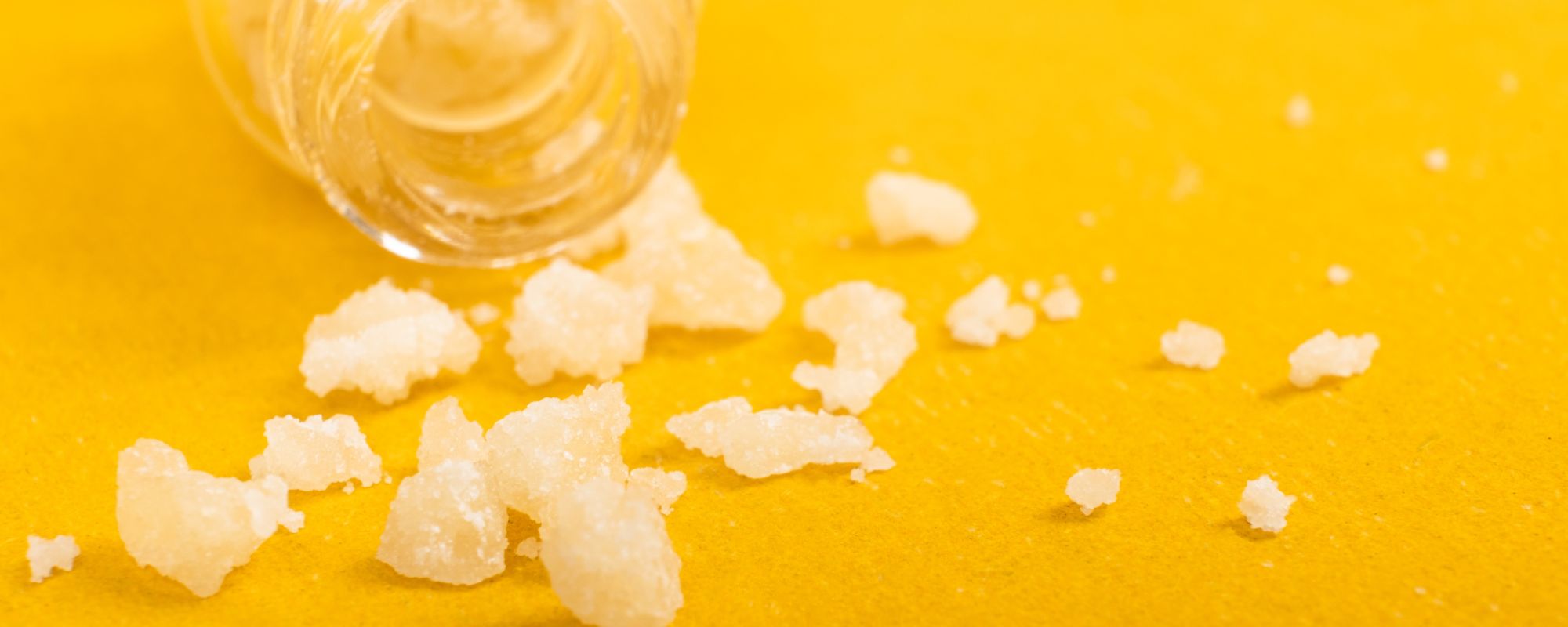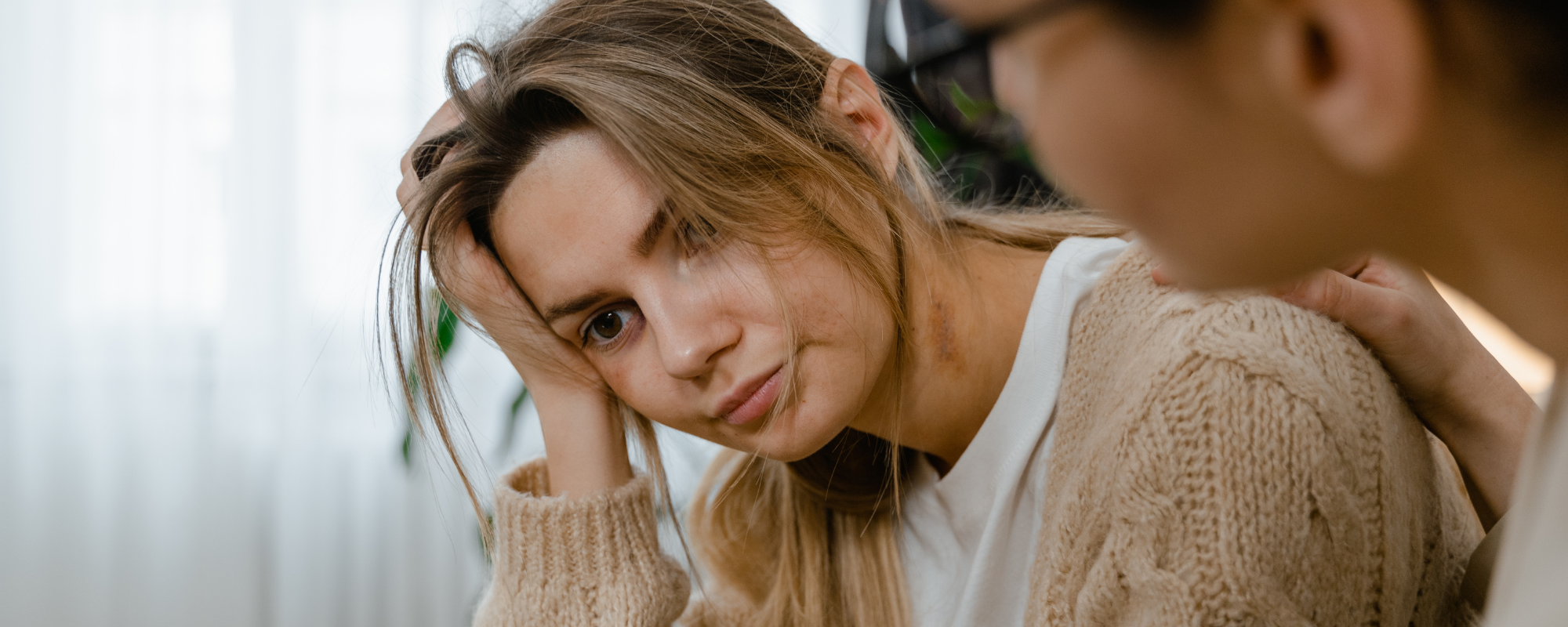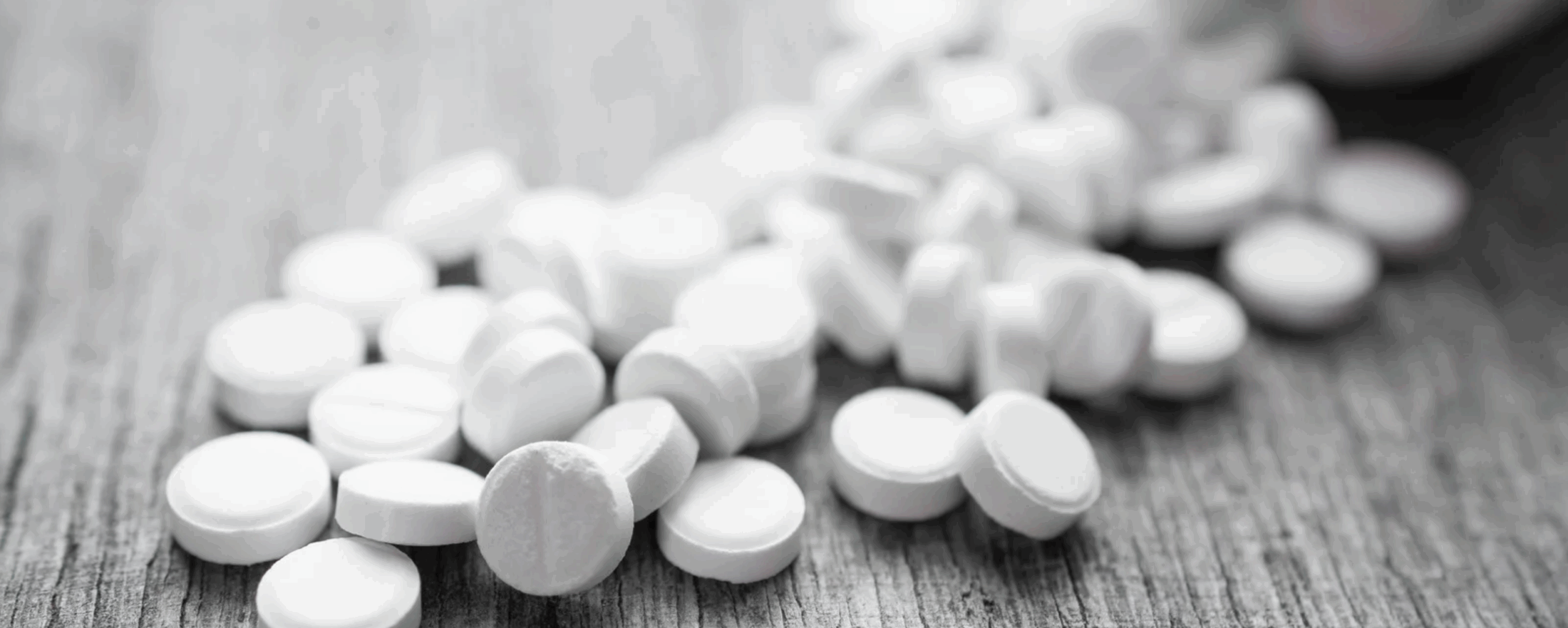With addiction, it’s not uncommon to see two or more drugs being used in tandem, and it’s no coincidence that Xanax and alcohol so often intersect in cases of substance abuse. A clinical study from 2023 illustrated that as many as 88% of benzodiazepine (such as Xanax) users reported the additional consumption of alcohol, with 28% respondents revealing intentional combined usage.
What explains the connection between the dangers of mixing Xanax and alcohol?
Both drugs are depressants, sought out for their ability to dull emotional pain, quiet the loudness that anxiety may bring and provide a potent, if not transitory, fleeting sense of calm. Alone, Xanax or alcohol carries its own risks, but together, they can create and exacerbate many adverse effects on your brain and body.
How exactly are Xanax and alcohol interactions dangerous — almost deceptively so — and why are they commonly mixed?
What Is Xanax?
A benzodiazepine (or “benzo” for short), Xanax is the brand name for alprazolam, a prescription medication used to treat anxiety disorders (including generalized anxiety disorder, or GAD), anxiety caused by depression and panic disorders (with or without agoraphobia).
How does Xanax work? Used as prescribed, a correct Xanax dosage works to lower elevated levels of excitement in the brain — just one root cause of anxiety — by releasing GABA, or gamma-aminobutyric acid. GABA is a special neurotransmitter produced in our brains, but Xanax creates more of it to help calm and quiet your nervous system during a panic or anxiety attack.
Side Effects of Xanax
Xanax is highly effective in what it sets out to do: reduce feelings of anxiousness and encourage sleep when anxiety makes insomnia worse. However, to achieve this, the drug can make you feel drowsy, lightheaded and mentally foggy which, for some people sensitive to medicines, can become potential side effects.
Other common, sometimes unintentional, Xanax side effects can include:
- Dizziness
- Fatigue
- Memory problems
- Low blood pressure
- Slurred speech and blurred vision
- Impaired coordination
- Headaches and lack of concentration
- Muscle weakness
- Nausea/vomiting
- Hyperhidrosis (excessive sweating)
- Constipation
- Changes in sex drive
Taking too much illicit Xanax (like unregulated versions purchased online) can create more severe side effects. Some people might feel a boost of energy and a lowered need for sleep leading to insomnia — the very symptoms that Xanax is meant to help. A risk of seizures, hallucinations, risky behavior and overdose is possible.
Is Xanax Addictive?
“(Benzodiazepines’) greatest asset is also their greatest liability: drugs that work immediately tend to be addictive,” notes the American Academy of Family Physicians.
Another recent study indicated that 30.6 million adults had used benzos within a year’s timeframe, with nearly 20% accounting for misuse of drugs like Xanax, pointing to the drug’s addictive potential.
Because Xanax works to activate your brain’s reward centers, taking more than prescribed — or misusing it recreationally to get that euphoric high — can quickly lead to addiction, where users may develop both a physical and psychological dependency.
One reason is that Xanax has what’s called a short half-life — the time it takes for a drug to decrease to half its starting dose after taking it. That means it is not only fast acting and absorbed quickly by the body, but its effects also wear off quickly, leading some users to take more and more of the drug.
Why Do People Mix Xanax and Alcohol?
Sometimes, taking more of a drug like Xanax isn’t enough on its own once someone develops a dependency. Just like combining benzos and other depressants, mixing Xanax and alcohol becomes a combination that stems from a desire to amplify the effects of one or both substances — more common in experimental drug taking than one might initially believe.
“In an unexpected finding, 100% of our sample who misused benzodiazepines in the past year reported co-use … with several other substances, including alcohol, opioids, stimulants and cannabis,” notes a 2020 study titled “Benzodiazepine misuse in adults with alcohol use disorder.” “Among those with past-year benzodiazepine misuse in the current sample, 46% ‘always or often’ misused benzodiazepines to increase the effects of alcohol or other drugs.”
What Is Polysubstance Abuse?
Polysubstance abuse, according to the Centers for Disease Control and Prevention CDC, happens when two or more substances are taken simultaneously. This can happen in two ways, notes the CDC:
- Intentional polysubstance use, when someone takes a drug to alter — either increasing or decreasing — the effects of a drug (like the effects of Xanax and alcohol) or to experience the combined effects.
- Unintentional polysubstance use, taking a drug unaware that it has been mixed with another substance.
Alcohol and benzos like Xanax are a common combination in polysubstance abuse because their effects on the central nervous system are similar — both depressants that enhance, yet also work against, the other. In fact, a study from the University of California San Francisco found that problem drinkers (those who consume at least 15 drinks a week) were more inclined to engage in higher benzo use.
Reach Out For Help With Addiction
Are you or a loved one struggling with addiction?
Royal Life Centers at Puget Sound is here to help you recover. Because we care.
What Happens When You Mix Xanax and Alcohol?
Can you mix alcohol and Xanax? Despite extensive research, it’s still unknown what role drinking alcohol while taking Xanax plays in Xanax and alcohol interactions. One study concluded that the ethanol found in alcoholic drinks may work to maximize the effects of alprazolam found in the bloodstream after a Xanax dose.
However, while mixing benzos and alcohol can augment the effects of both drugs together, the effects can be severe, from extreme reactions to the polysubstance abuse in motion, to life-threatening with the risk of fatal overdose. Here are some of the risks:
Depressed Breathing and Heart Rate
One of the most dangerous effects of mixing Xanax and alcohol is the depression of the central nervous system and suppression of vital functions it controls. According to the Cleveland Clinic, these can include:
- Slowed, shallow breathing/shortness of breath on account of hypoxia (low oxygen levels in the blood)
- Faintness
- Dizziness
- Feeling confused
- Lethargy and trouble staying awake
Impaired Motor Functions
Taking Xanax with alcohol can severely impair your physical and cognitive functions. “The combination of antidepressants and alcohol will affect your judgment, coordination, motor skills and reaction time more than alcohol alone,” says the Mayo Clinic.
“Combining alcohol with certain medications, particularly those with sedative effects, can increase the risk of adverse events, including falls, driving accidents and fatal overdoses,” notes the National Institute on Alcohol Abuse and Alcoholism.
“Both the individual use of alprazolam and its combination with alcohol resulted in impaired reaction time, digit vigilance and verbal, spatial and numeric working memory tasks,” notes a 2023 study of 20 participants for recreational co-consumption of benzodiazepines and alcohol.
Increased Risk of Overdose
Studies show that prior alcohol use or an alcohol use disorder is directly linked to an increased risk of benzo misuse and abuse — but there is also a very serious risk of overdose when alcohol and benzos are mixed.
“When benzodiazepines and alcohol are used concurrently, their sedative effects significantly increase the risk of adverse events, including fatal overdose,” notes the 2019 study, “Benzodiazepine and Unhealthy Alcohol Use Among Adult Outpatients.”
According to the report, benzodiazepines and alcohol were involved, in recent years, in 27.2% of benzodiazepine-related visits and 21.4% of benzodiazepine-related deaths in hospital emergency departments.
In the event of a Xanax/alcohol overdose, call 911 immediately and the Poison Help number at 1-800-222-1222.
Long-Term Consequences of Mixing Xanax and Alcohol
Apart from the crippling effects of addiction, chronic, prolonged use of Xanax and alcohol can produce long-term physical and mental health issues, including:
- Liver damage
- Cognitive impairments
- Depression
- Changes in mood and personality
- Heart disease
- Stroke
- Cancer
- Coma
- Other assorted illnesses
- Death
What Are the Signs and Symptoms of Someone Mixing Alcohol and Xanax?
It can be easy to confuse Xanax and alcohol symptoms as simply having had too much to drink, since many of the signs are similar to alcohol abuse. But here’s what to look for if someone has been drinking alcohol while taking Xanax:
- Extreme drowsiness or lethargy
- Slurred speech
- Impaired coordination
- Memory lapses or blackouts
- Mood swings or erratic behavior
- Difficulty breathing
Is There Treatment for Xanax and Alcohol Abuse?
Yes — thankfully, with a dual diagnosis and a combination of various effective treatment plans, from detox to research-based therapy, you or a loved one can overcome polysubstance abuse, especially if it’s related to abuse of benzodiazepines and alcohol. Here’s how Royal Life Centers at Puget Sound help:
Xanax and Alcohol Detox in Washington State
The first and indispensable step in treating Xanax and alcohol abuse is detoxification, or detox. Detox is necessary to flush drugs from your body and manage withdrawal symptoms — an integral part of treatment since ridding the body of Xanax and alcohol together take special care that only a trained and compassionate medical staff can help see you through.
Inpatient Xanax and Alcohol Treatment in Washington State
Residential inpatient treatment following detox is encouraged, as it’s here when self-discovery and change can truly begin. Inpatient treatment gives you the opportunity to live onsite at our facility, over a 2-week period, so you can commit your undivided, 24/7 attention to recovery without distractions — whether it’s strictly for benzo abuse or alcohol addiction, or both. Here, you begin the healing process, in earnest, in a nurturing environment, from counseling to identify triggers and develop the necessary coping skills to manage them, to the rallying rapport of group therapy with others in treatment seeking the same goals.
Outpatient Xanax and Alcohol Treatment in Washington State
The outpatient program at Royal Life Centers at Puget Sound is all about flexibility hand-in-hand with high-level treatment. It’s ideal for individuals transitioning out of inpatient care, or for less severe addictions not mandating an onsite stay. Attend counseling, group therapy and support networks during the day while going home at night to maintain your family and personal responsibilities.
Aftercare and Sober Living in Washington State
Recovery is not a finite journey. After completing addiction treatment, an aftercare program enables you to facilitate your own healing after formal treatment has concluded. With a case manager at your side, they can help connect you to a sober living home or with local support groups (like Alcoholics Anonymous or Narcotics Anonymous) to help you transition back to everyday life. This continued support equips you with the tools to stay accountable to your own sobriety.
Polysubstance Abuse Treatment at Royal Life Centers
The effects of a polysubstance abuse disorder involving Xanax and alcohol may be complex — but the search for treatment and recovery doesn’t have to be. The effects of alcohol and Xanax can lead to devastating consequences if left untreated, which is why it’s so imperative to seek treatment now and see yourself or a loved one to the path to recovery.
At Royal Life Centers at Puget Sound’s safe, comfortable and welcoming center in Sumner, WA, that means finding whole continuum of proven, effective care accompanied by holistic and specialty therapies — more than just an avenue to getting sober, but an opportunity to learn more about yourself in the process and carve out a new direction in life.
Recovery is possible with the right support and resources, but the first step is on you. We can help, and you have the power to make that change with one phone call. Contact us today to get free and confidential help, 24/7.
REFERENCES:
- Acute administration of alprazolam, alcohol and their combination on cognitive performance and mood: A randomised, double-blind, placebo-controlled study – PMC
- Alprazolam (Xanax): Uses & Side Effects
- Addiction: Part I. Benzodiazepines—Side Effects, Abuse Risk and Alternatives | AAFP
- Acute administration of alprazolam, alcohol and their combination on cognitive performance and mood: A randomised, double-blind, placebo-controlled study – PMC
- Alcohol-Medication Interactions: Potentially Dangerous Mixes | National Institute on Alcohol Abuse and Alcoholism (NIAAA)
- Benzodiazepine Use and Misuse Among Adults in the United States – PubMed
- Can You Drink Alcohol While Taking Antidepressants?
- Half Life – StatPearls – NCBI Bookshelf
- Polysubstance Use Facts | Stop Overdose | CDC
- Problem Drinkers Have Higher ‘Benzo’ Use, UCSF-Kaiser Permanente Study Shows | UC San Francisco






